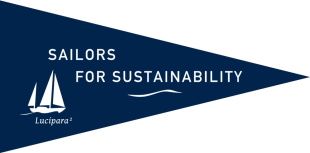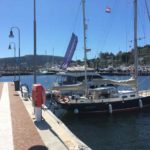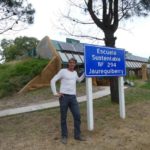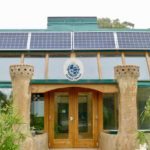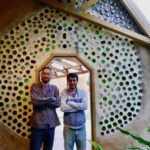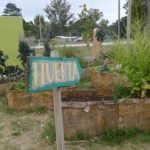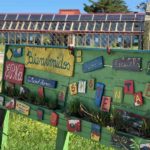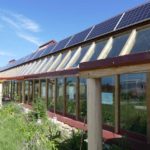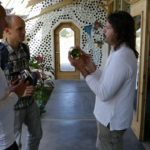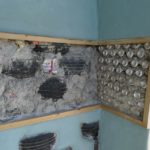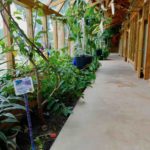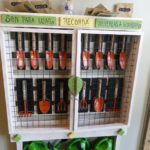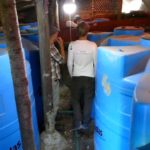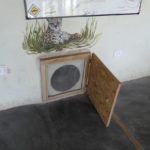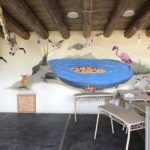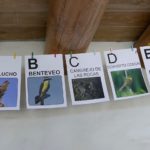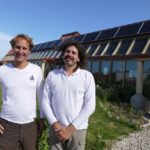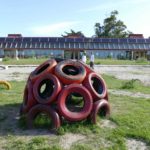Sustainable Schools (URY)
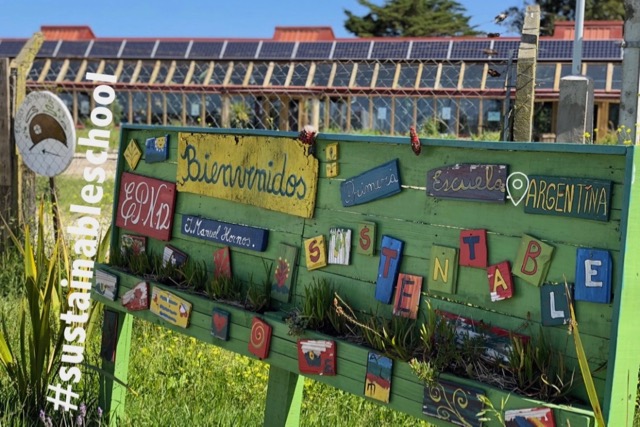
In Uruguay and Argentina, we visit two sustainable schools. The buildings and teachings are textbook examples of sustainability.
Contributes to achieving the following UN Sustainable Development Goals:
“The first sustainable school of Latin America is here in Uruguay!” our immigration officer in Piriapolis excitedly tells us. We have just mentioned to her that we are in Uruguay to visit sustainable projects. “And it’s not far from here”, she continues. Her cheerfulness and interest in our project surprise us. We have already visited quite a few countries, but never before have we encountered such a friendly and helpful immigration official. She offers useful advice on how to get to the school while inspecting and stamping our passports. What a lovely welcome to a new country!
Sustainability in the School Building
Soon after having settled in our new surroundings, we get ready to visit the school. Destination: Jaureguiberry, a small town on the coast of Uruguay. We don’t have to search for long. From the motorway we easily spot the unusual school building. It stands out with its solar panels on the roof, car tires in the playground and empty bottles in the walls. A large blue sign spelling “Escuela Sustentable no. 294″ in white letters throws us off. Are there that many sustainable schools in Uruguay? Inside we meet Joaquin de la Sovera and Francesco Fassina, who founded this school with their organization TAGMA. They smile and assure us that this is really the first sustainable school. “All primary schools are numbered in Uruguay, regardless of the type”. After that introduction they offer to explain what is sustainable about the school we are in.
“We built the school according to the Earthship design of American architect Michael Reynolds”, Joaquin begins. “That means that we used natural materials such as wood, clay, and earth. In addition, we incorporated recycled materials into the walls, such as glass bottles, cans and car tires”. Joaquin then points to the school’s façade. “For our electricity needs, we rely on solar panels. The renewable energy they produce is stored in batteries for when there is more demand for electricity than supply. The glass front, facing north, ensures that as much sunlight as possible comes into the building. We retain the heat with good insulation. When it gets too warm, we open hatches through which the hot air can escape. It is replaced by cool air that comes in through ventilation holes in the walls”.
But that’s not all, we learn. “We also collect rainwater and store it in tanks for use as drinking water”, Joaquin adds. “Used water is filtered and then led to plants”. He points to the plants in the hallway. “We grow fruit, vegetables, and herbs inside and outside in the gardens for the children to eat.”
Sustainability in Education
The school building is clearly well thought through. At the same time, the technical aspects are quite simple and easy to replicate. We ask Francesco what the children learn about sustainability here. He explains that teachers integrate sustainability into the lessons. “We are a public primary school and the government prescribes the content of the curriculum, but there are many ways to teach sustainability. For example, by teaching to count using recycled materials as props. Or by studying the plants as a biology lesson, or by explaining how renewable energy is generated. We also teach the children how to grow and care for edible plants. The harvest is a great reward for their efforts and also serves as a healthy supplement to the students’ diet”.
The concept is a success. We hear that the students are proud to attend school here and also take the lessons home. “The students are between four and twelve years old. After attending this school for eight years, they are accustomed to generating renewable energy, collecting rainwater, and recycling materials. That is an important life-lesson. Some students have started growing vegetables and fruit at home. And some have got their parents to install solar panels on the roof”, Francesco assures us with a smile.
Success with Crowd Funding
“What did it take to realize this project?” we ask Joaquin and Francesco. They explain that TAGMA, the organization for which they work, is an NGO committed to more sustainable education. “We built the school with the help of crowd funding and many volunteers”, Joaquin answers. He’s quick to add: “Building this school was not more expensive than building an ordinary school building. But we needed crowd funding because the Uruguayan government did not have any budget available for constructing a new school”. It was worth it: The sustainable school has become so popular that children from neighbouring villages also want to go to school there.
Version 2.0
A few months later we are in Mar del Plata, Argentina, for the final preparations of our sailing trip to Patagonia. Together with trainee Lars we take a bus to the coastal town of Mar Chiquita. The second sustainable school in Latin America was recently opened there, also based on an Earthship design. Unsurprisingly, it closely resembles the school that we visited in Uruguay. Another TAGMA representative, Matias Rivero, devotedly shows us around. He has brought his experience from Uruguay to help build this school in Argentina.
On a tour of the building, we recognize the sustainable characteristics from Uruguay; recycled and natural building materials were used, solar energy is generated, and rainwater harvested. We ask Matias which things have changed. “We applied the same concept, because the experiences from Uruguay were very good”, Matias explains. “And thanks to what we learned in Uruguay, we could construct this building faster.”
Inside, we notice beautiful wall paintings. Above them are pictures of animals, one for each letter of the alphabet. “We use creative ways of teaching the students about nature” Matias tells us. “The murals depict the unique ecosystem around here, so the children learn about the lagoon, river and ocean. And we teach the alphabet with the names of local animals”.
Textbook Example
We get excited about the prospect over children learning about sustainability at school, inside a sustainable building on top of that. “Couldn’t this be a model to be applied in other places, too?” Floris asks Matias. He smiles: “That is exactly the plan!” He explains that this type of school will be built throughout Latin America. “We intend to build one sustainable school in each Latin American country. After that, we want to scale up it”. It’s a wonderful initiative that we strongly support; truly a textbook example for the world!

